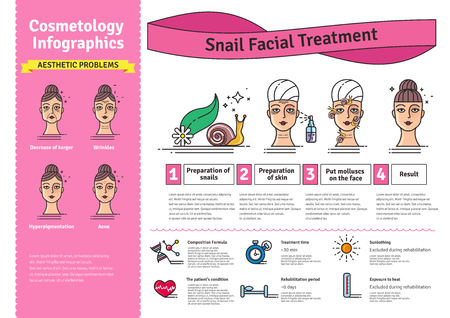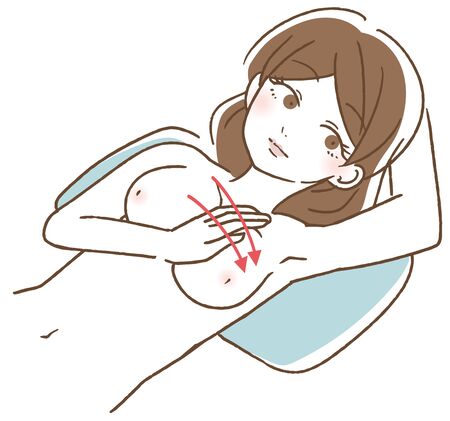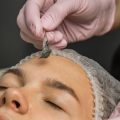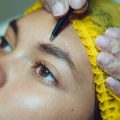Understanding Radiofrequency Skin Tightening
In the ever-evolving world of British aesthetics, radiofrequency (RF) skin tightening has swiftly gained popularity as a go-to non-surgical solution for rejuvenating one’s appearance. But what exactly is RF treatment, and why are so many people across the UK choosing it over more traditional approaches? At its core, radiofrequency skin tightening utilises controlled energy waves to heat the deeper layers of your skin, stimulating collagen production and resulting in a firmer, more youthful look. This innovative technology is now a familiar feature in clinics from London to Edinburgh, offering Britons a subtle and effective way to address signs of ageing without downtime or drastic measures. As we become increasingly conscious of both our wellbeing and the natural beauty movement prevalent in the UK, RF treatments stand out for their ability to deliver noticeable results while maintaining that all-important understated elegance that British style is known for.
2. The Science Explained: How RF Technology Works
If you’ve ever wondered what actually happens beneath your skin during a radiofrequency (RF) treatment, you’re not alone. Let’s break it down in plain English, with a nod to British sensibility—think of it as a proper cup of tea for your curiosity. RF technology works by delivering controlled energy waves into the deeper layers of the skin without harming the surface. These waves gently heat the dermis (that’s the middle layer), reaching temperatures that kick-start your body’s natural repair response.
The Journey of RF Energy Through Your Skin
| Skin Layer | What Happens During RF Treatment |
|---|---|
| Epidermis (Surface) | Remains untouched and safe |
| Dermis (Middle Layer) | Heats up to stimulate collagen fibres |
| Subcutaneous Tissue (Deepest Layer) | Mild heating encourages further tightening effects |
Collagen Production: The Star Player
The real magic happens with collagen—a protein that keeps our skin plump and youthful. As the dermis warms up, the heat causes existing collagen fibres to contract instantly. But that’s just the beginning. Over time, this process also signals your fibroblast cells (the tiny builders in your skin) to produce new, fresh collagen. It’s like giving your skin a gentle nudge to renew itself naturally.
The Biological Process Behind Skin Tightening
- RF energy heats the dermis, causing immediate collagen contraction
- Fibroblast cells are activated, ramping up new collagen production over weeks
- The result: firmer, smoother, and more lifted skin—often with zero downtime
This isn’t wizardry; it’s grounded in sound science and decades of medical research. And while results can vary from person to person, many in Britain find RF treatments an appealing option for subtle, natural-looking rejuvenation—no needles or invasive procedures required.

3. Benefits for British Skin Types and Lifestyles
When it comes to skin care, one size rarely fits all—especially in a country as beautifully diverse as the UK. Radiofrequency (RF) skin tightening has quickly gained popularity here, and not without reason. The treatment’s adaptability to varied skin types makes it particularly well-suited for Britain’s multicultural population, from fair Celtic complexions to richly pigmented Afro-Caribbean and South Asian skin tones. Unlike some energy-based treatments that risk hyperpigmentation or irritation, RF technology is safe and effective across this spectrum, largely because it heats the deeper dermal layers without disrupting the surface. This means less downtime and fewer complications, something everyone can appreciate.
The British climate also plays an influential role. Let’s face it: our weather is notoriously unpredictable, swinging from damp cold to rare bursts of sunshine. These changes, combined with central heating in winter and occasional sun exposure in summer, can leave our skin feeling lacklustre or sagging prematurely. RF treatments address these concerns by stimulating collagen production and improving skin elasticity, offering a gentle yet noticeable lift that fits seamlessly into busy urban or rural routines.
British lifestyles are famously active and on-the-go—whether it’s brisk walks through Hyde Park or cycling along the Scottish coast. Many of us simply don’t have time for lengthy recovery periods. RF skin tightening sessions are quick, often fitting into a lunch break, with minimal aftercare needed. This convenience means you can get back to your daily routine almost immediately—no hiding away indoors required.
What’s more, there’s an understated confidence that comes from looking refreshed yet natural—a hallmark of British beauty ideals. RF treatments deliver subtle results over time, enhancing rather than altering your features. In short, radiofrequency offers a tailored solution for those who want to age gracefully, maintain healthy skin in our unique climate, and do so with minimum fuss.
4. What to Expect: The Treatment Experience
Stepping into a clinic for your first radiofrequency (RF) skin tightening session can feel both exciting and a tad daunting, especially if you’re used to British self-care rituals like Sunday soaks or afternoon face masks. Let me walk you through the experience, using both my own journey and insights from practitioners on Harley Street.
The Sensory Journey: As you settle into the treatment chair, a cooling gel is applied to your skin — think of it as the British equivalent of slathering on aftersun after a rare day of sunshine. The RF device itself glides across your face or body in gentle circular motions. Most people describe the sensation as a gradual warmth, not unlike holding a mug of tea in chilly weather. There’s no sharp pain; rather, it’s a comforting heat that builds up under the surface, signalling that collagen production is being stimulated just where you want it.
| Sensation | Common Description | British Self-Care Parallel |
|---|---|---|
| Warmth | Deep, soothing heat | Like a hot water bottle on a winter’s night |
| Tingling | Mild prickling during intensity peaks | Similar to exfoliating with a salt scrub |
| Redness | Slight flush post-treatment | Reminiscent of cheeks after brisk coastal walks |
Aftercare Tips: Keeping Calm and Carrying On
Once the session wraps up, your skin might feel slightly warm or look rosy—completely normal and usually gone within an hour or two. Here’s where you can blend British self-care rituals with medical aftercare:
- Avoid hot baths and saunas: Stick to lukewarm water for cleansing—think quick showers over leisurely soaks.
- Embrace gentle skincare: Opt for calming products with ingredients like chamomile or oat (a nod to classic British remedies).
- Stay hydrated: Sip herbal teas such as peppermint or nettle throughout the day, supporting your skin’s recovery from within.
- Sunscreen is essential: Even when skies are grey, daily SPF protects sensitive post-treatment skin.
The Recovery Timeline: Quick and Quietly Effective
Unlike more invasive procedures, RF skin tightening rarely requires downtime. You can pop out for lunch at Pret or meet friends for coffee straight after. Results develop gradually over several weeks, subtly enhancing your natural features rather than announcing ‘I’ve had something done.’ It’s discreet rejuvenation—the sort we Brits tend to prefer.
A Final Thought: Making It Your Own Ritual
The beauty of RF lies not only in its scientific foundations but also in how easily it fits into everyday life. For me, it’s become part of my self-care arsenal—right up there with Sunday roasts and catching up with friends at the pub. Consider each session as an investment in both appearance and well-being—a thoroughly modern British ritual.
5. Safety, Myths, and Clinical Backing
When it comes to radiofrequency (RF) skin tightening, it’s only natural to approach the treatment with a healthy dose of scepticism—especially here in the UK, where we’re known for our pragmatism and love of evidence-based solutions. Let’s take a closer look at some common misconceptions, and set the record straight about safety and clinical credibility.
Addressing Common Misconceptions
One of the most persistent myths is that RF treatments are inherently risky or can cause burns. While early versions of the technology did come with higher risks, modern British clinics use highly regulated devices designed with multiple safety features. These include real-time temperature monitoring and automatic shut-off mechanisms—making burns extremely rare when performed by a trained practitioner.
Is RF Really Safe?
Absolutely, when handled by certified professionals. In the UK, practitioners must adhere to strict guidelines established by regulatory bodies such as the Care Quality Commission (CQC). Many reputable clinics are also members of the British Association of Dermatologists or the Joint Council for Cosmetic Practitioners (JCCP), ensuring they meet rigorous standards for both patient care and equipment maintenance.
The Clinical Evidence
If you’re like me and prefer to see hard proof before making decisions about your skin, you’ll be pleased to know that numerous clinical studies support the efficacy and safety of RF treatments. For instance, research published in renowned journals has shown measurable improvements in skin laxity and texture after a series of sessions—with minimal side effects reported. These studies typically involve participants from varied backgrounds, further reinforcing their relevance to British patients.
British Standards Matter
It’s worth noting that British clinics often go above and beyond minimum legal requirements, investing in ongoing staff training and state-of-the-art devices. This commitment not only ensures optimal results but also prioritises client wellbeing—something I’ve experienced first-hand during my own treatments. If you’re considering RF skin tightening, always choose a practitioner who is transparent about their qualifications and happy to discuss their protocols.
In short, while myths about RF persist, the reality is reassuring: in the hands of skilled British professionals working under robust regulations, radiofrequency skin tightening is both safe and clinically validated. It’s one more reason why this technology is steadily gaining favour across the UK.
6. Why It Matters: Long-Term Impact on Ageing Gracefully
As we reflect on the science behind radiofrequency skin tightening, it’s worth pausing to consider why these advancements matter, especially within the context of British culture. There’s a certain understated elegance to ageing gracefully here—a value rooted in self-acceptance, quiet confidence, and embracing each chapter of life with authenticity. RF treatments, with their proven ability to stimulate collagen and subtly rejuvenate the complexion, offer more than just cosmetic change; they empower individuals to feel comfortable in their own skin without dramatic intervention.
The beauty of radiofrequency technology lies not just in its science, but also in its respect for natural-looking results. Unlike invasive procedures that can sometimes undermine our sense of self, RF skin tightening aligns with the British ethos of subtle enhancement—supporting us as we navigate the passage of time with dignity. It’s about choosing to look refreshed rather than transformed, enhancing what makes us unique rather than masking it.
Confidence is deeply personal and multifaceted. For many in the UK, maintaining healthy, resilient skin through non-surgical means isn’t about chasing youth, but about preserving a sense of vitality and self-assurance that comes from within. The decision to explore RF treatments is a considered one—often made after careful research and honest reflection on personal values and goals.
Ultimately, the long-term impact of radiofrequency isn’t measured solely by firmer skin or softened lines. Instead, it’s reflected in the gentle boost to our daily confidence, the ease with which we greet our reflection each morning, and our ability to age on our own terms. In this way, RF skin tightening becomes not just a scientific innovation, but a meaningful tool in supporting graceful ageing—one that respects both tradition and individuality in equal measure.


